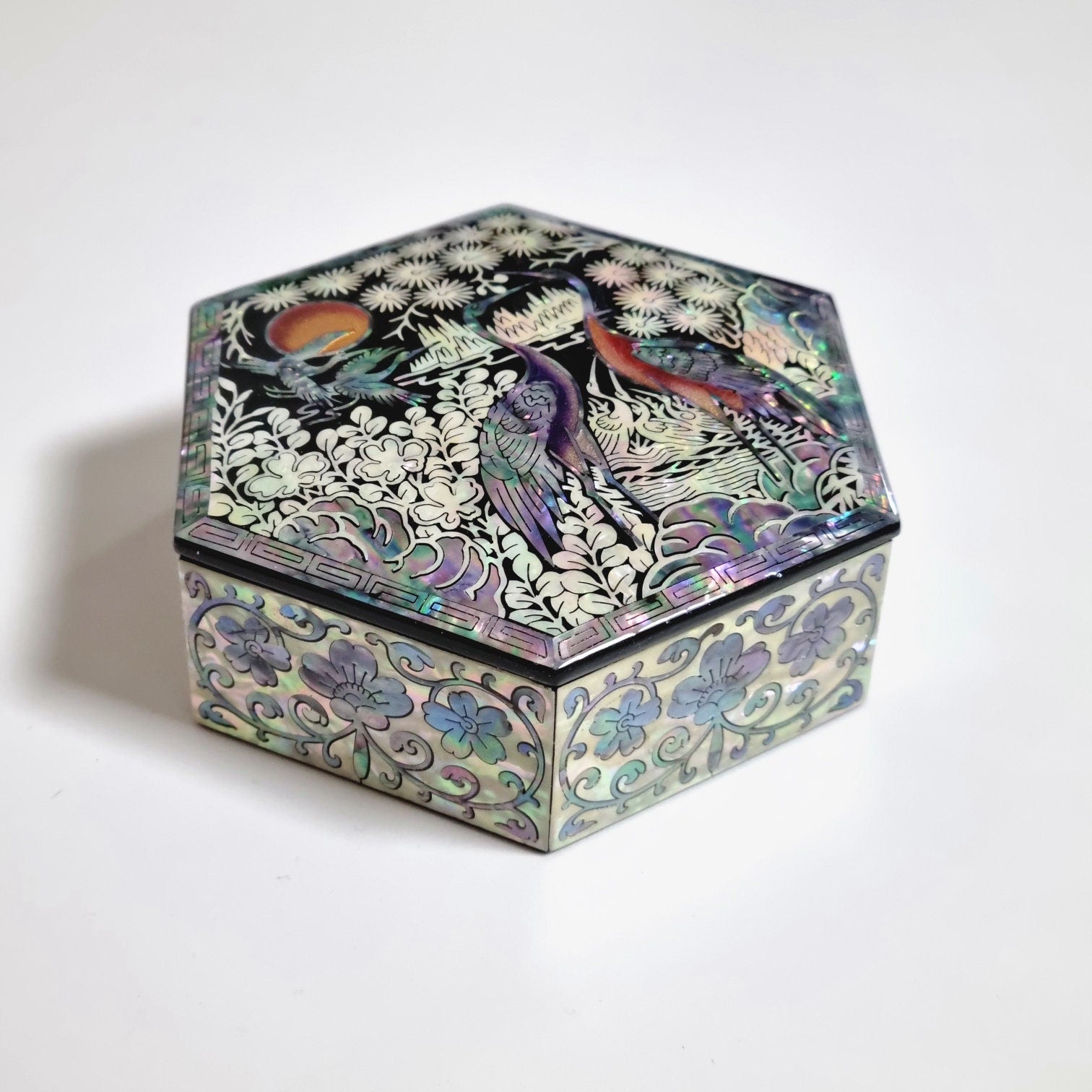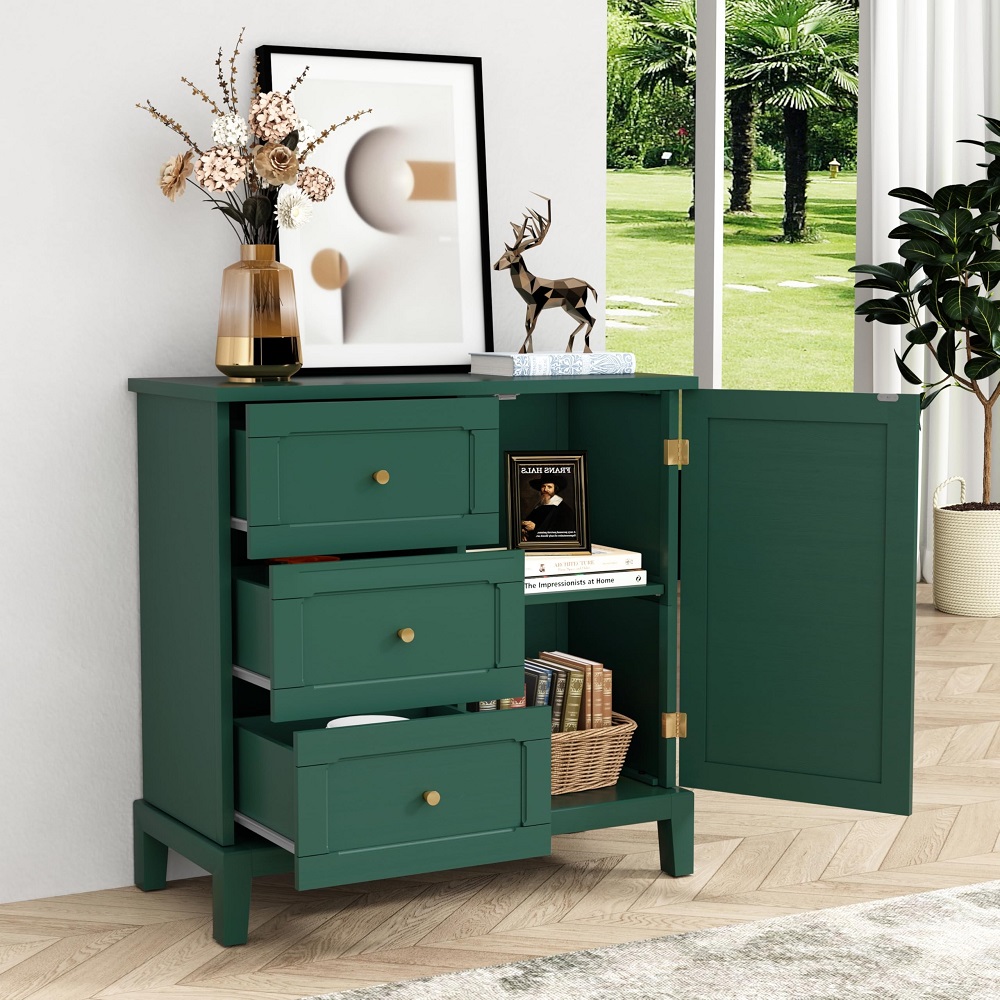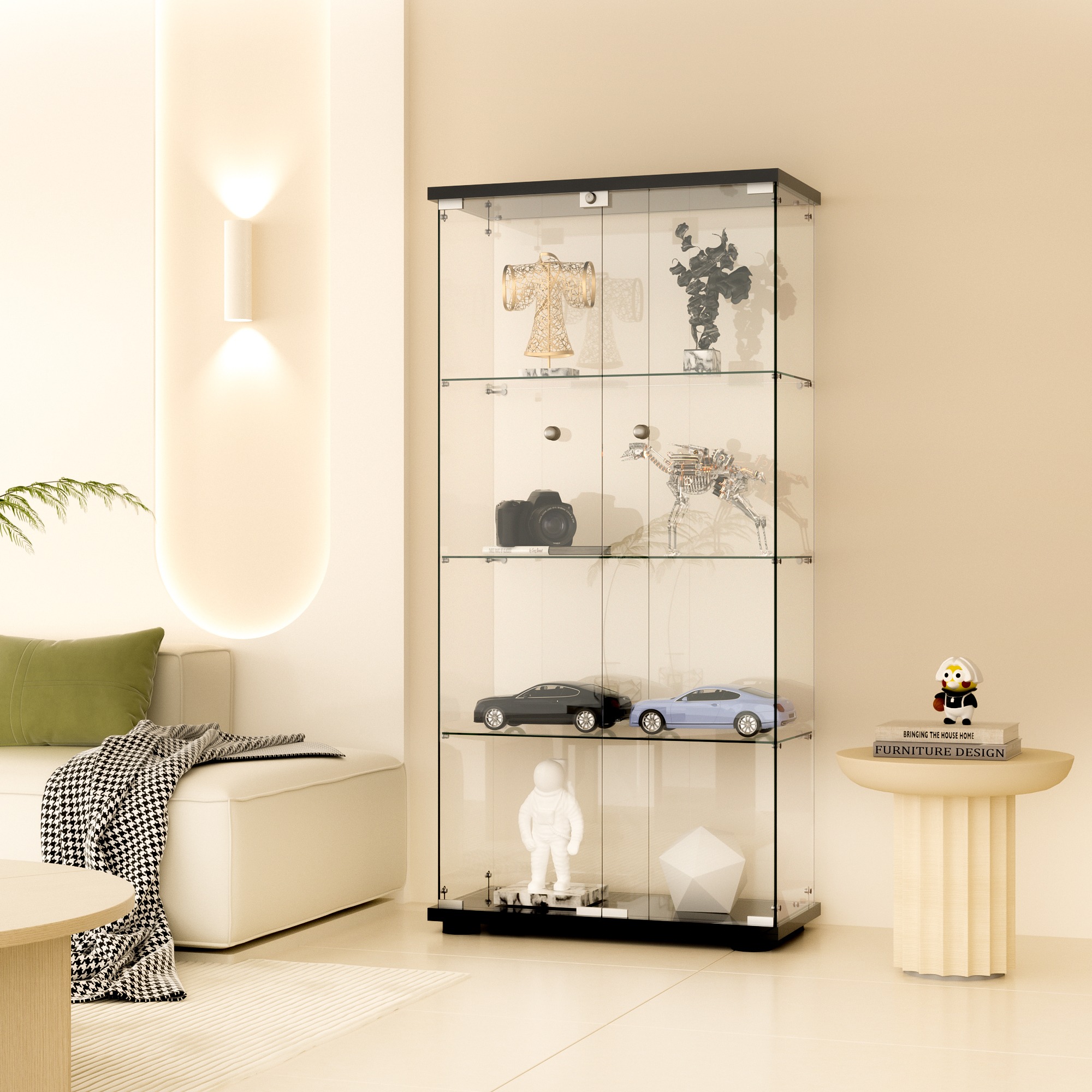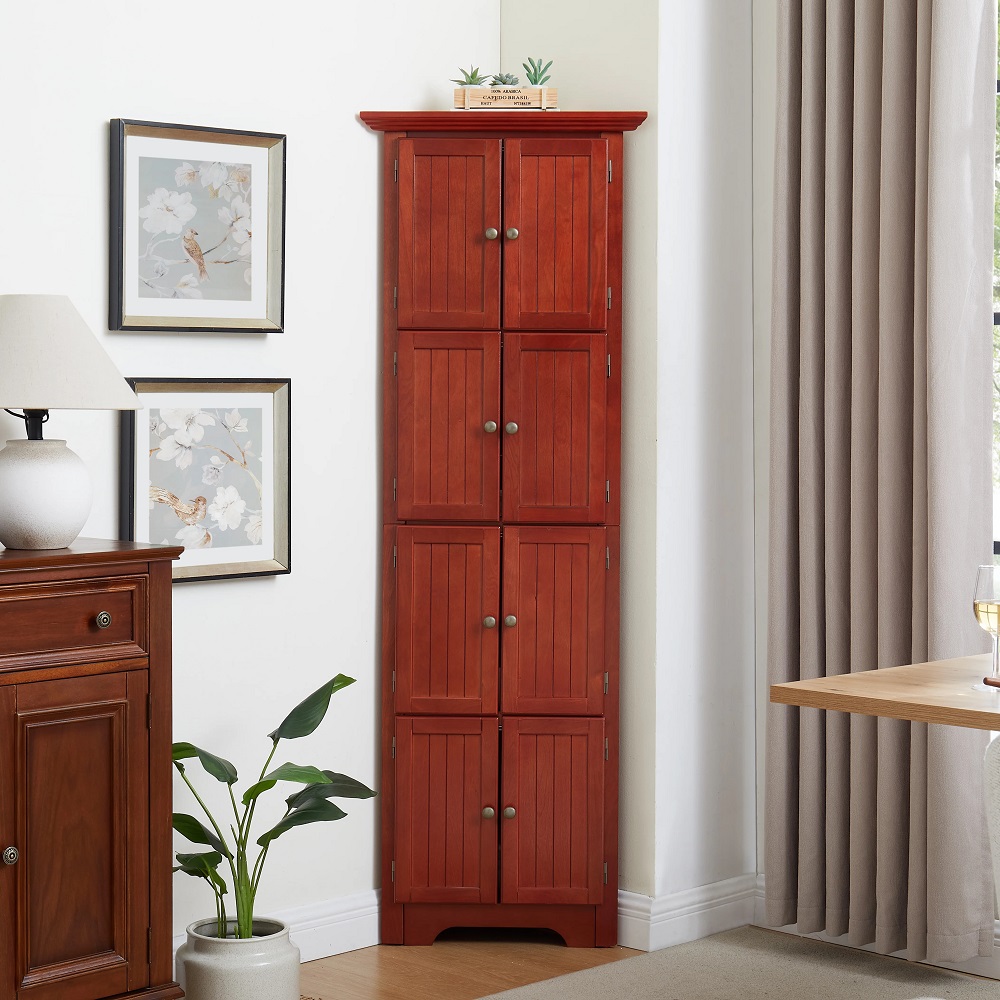Introduction: Unlocking the Secrets of Joseon’s Jewels
In the annals of cultural heritage, few objects encapsulate the essence of a nation’s aesthetic and its people’s reverence for beauty quite like traditional jewelry boxes. In the case of Korea, these treasure chests, known as ‘Cheongsa Sam’ or ‘Geumgang Jaryeong’, are more than mere repositories for precious trinkets; they are storytellers, whispering tales of Joseon Dynasty’s opulence, craftsmanship, and the intricate web of social customs that defined the era. This exploration delves into the intricate world of Korean jewelry boxes, unearthing their history, symbolism, construction, and the profound impact they had on the society that cherished them.
Historical Enchantment: A Glimpse into the Past
The tale of Korean jewelry boxes begins in the Joseon Dynasty (1392-1897), a period marked by Confucian ideals and a flourishing of the arts. As society stratified into strict hierarchical classes, personal adornments and the vessels that housed them became markers of status and wealth. The royal court, nobility, and affluent merchants commissioned these boxes not only to safeguard their jewels but also as symbols of their prestige. Each box was a testament to the owner’s taste, wealth, and social standing, meticulously crafted to reflect the aesthetic sensibilities of the time.

Craftsmanship Marvels: Artistry in Wood and Lacquer
At the heart of every traditional Korean jewelry box lies a marriage of exquisite woodworking and lacquerware techniques. Masters of the craft utilized native Korean woods, such as paulownia and chestnut, known for their lightness and durability, carving them into elegant forms before applying layers of natural lacquer. The lacquering process, which could span months or even years, involved multiple coatings of sap from the Rhus verniciflua tree, polished to a mirror-like finish. Intricate mother-of-pearl inlay work, known as ‘Najeon Chilgi’, adorned many boxes, adding a touch of shimmering elegance to the otherwise somber lacquer. This meticulous artistry transformed mundane containers into objets d’art, reflecting the harmony between nature and human creativity.
Symbolism Embedded: A Language of Ornamentation
Beyond their material beauty, Korean jewelry boxes were imbued with rich symbolism. Motifs such as dragons, phoenixes, peonies, and bamboo held deep cultural significance, each conveying wishes for prosperity, longevity, or nobility. Dragons symbolized imperial power, while phoenixes represented the queen or noblewomen’s virtue. Peonies signified wealth and honor, and the resilience of bamboo echoed the Confucian ideal of integrity. These carefully chosen decorations not only adorned the boxes but also served as visual narratives, communicating the aspirations and values of their owners to visitors and descendants alike.
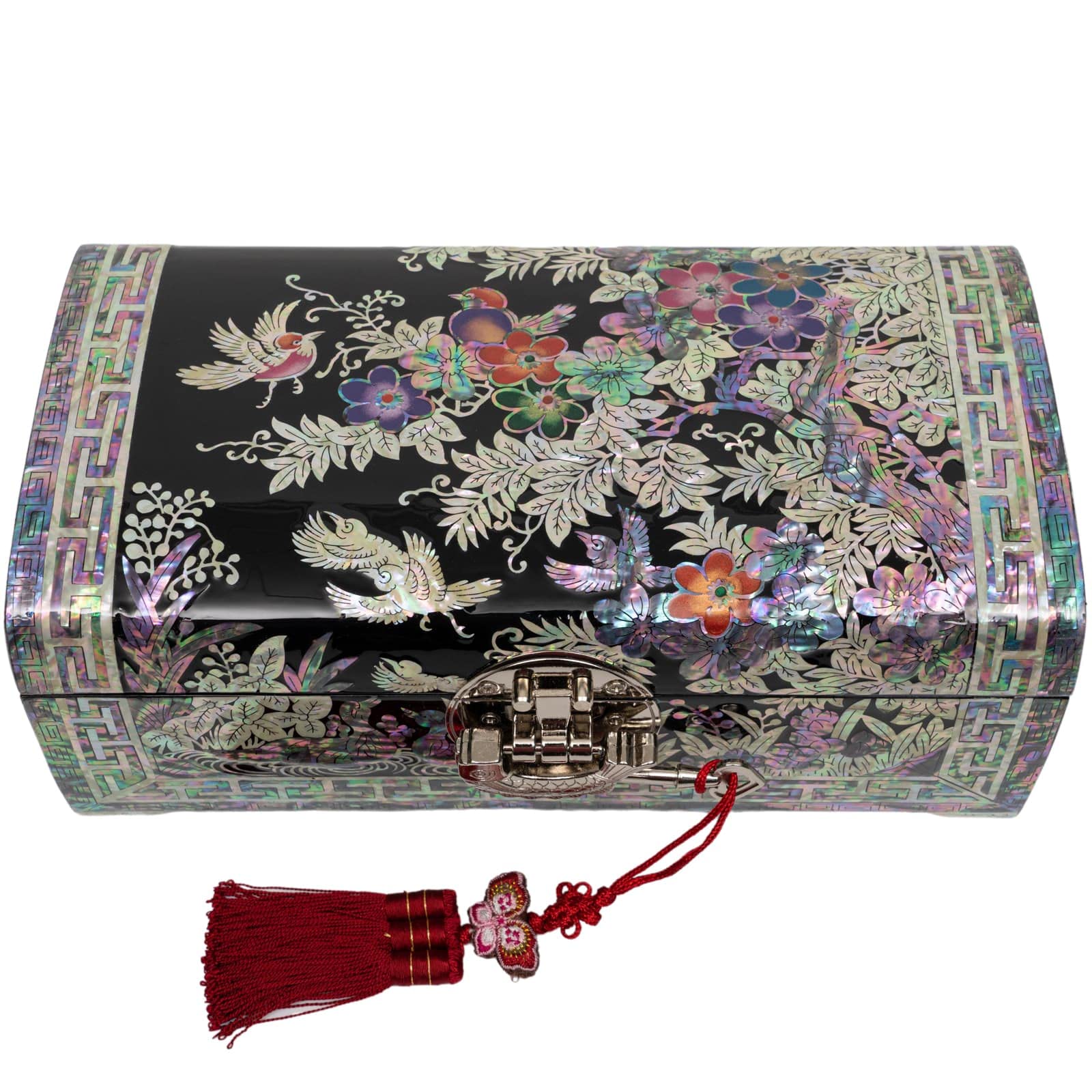
Functional Elegance: Design for Purpose
While aesthetics dominated the creation of these boxes, functionality was never forsaken. Korean jewelry boxes often featured a modular design, with tiered compartments and secret drawers to accommodate various sizes and types of jewelry. Some incorporated hidden mechanisms to deter theft, a testament to the ingenuity of the craftsmen. The interiors were lined with silk or velvet, providing a soft cushion for the delicate contents. This thoughtful design ensured that each piece of jewelry was not only protected but also easily accessible, reflecting a balance between form and function that remains a hallmark of Korean craftsmanship.
Cultural Significance: Beyond the Physical Realm
In the context of Joseon society, jewelry boxes transcended their utilitarian purpose, becoming vehicles for transmitting cultural values and social etiquette. They were often gifted during significant life events such as weddings, symbolizing the transfer of wealth and blessings from one generation to another. For the aristocracy, the boxes served as a display of their refined taste during social gatherings, where the opening of a jewelry box was a ritualistic act, revealing not just treasures within but also the family’s prestige. Thus, these boxes held a pivotal role in reinforcing social hierarchies and preserving cultural traditions.
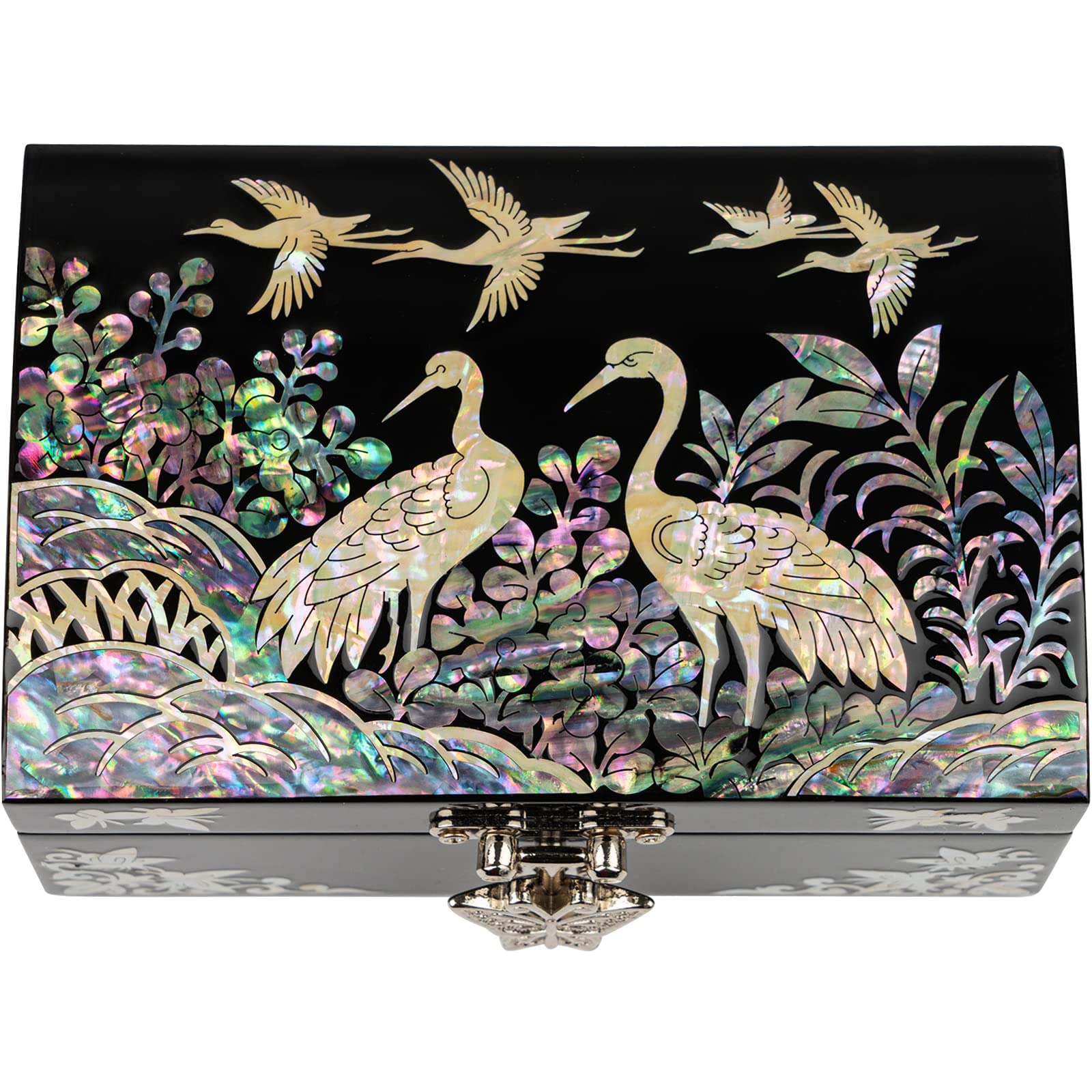
Revival and Modern Interpretations: A Legacy Continues
Despite the passage of time and the influence of modernity, traditional Korean jewelry boxes continue to captivate contemporary audiences. Today, artisans are reviving ancient techniques, infusing them with modern design elements to create pieces that resonate with a global market. These contemporary interpretations often blend traditional motifs with minimalist designs, appealing to those who appreciate the fusion of old and new. Through exhibitions, museums, and artisanal workshops, the legacy of Joseon’s jewelry boxes is being kept alive, ensuring that future generations can marvel at the craftsmanship and cultural depth encapsulated within each treasure chest.

Global Appreciation: Crossing Cultural Borders
The allure of Korean jewelry boxes has stretched far beyond the borders of the peninsula, captivating collectors, designers, and enthusiasts worldwide. As global interest in Korean culture surges, driven by the popularity of K-pop, K-dramas, and Korean cuisine, these traditional artifacts have found a new stage on the international art scene. They are now featured in high-end galleries, luxury lifestyle exhibitions, and even inspire modern fashion and accessory designs. This global embrace underscores the universal appeal of their craftsmanship and the timeless beauty they embody, making them ambassadors of Korean heritage to the world.
Sustainability and Preservation: Embracing the Lessons of the Past In an age where sustainability and responsible consumption are paramount, the traditional methods used in crafting Korean jewelry boxes offer valuable lessons. The use of natural materials like wood, lacquer, and mother-of-pearl highlights a harmony with nature that resonates deeply with contemporary concerns. Moreover, the emphasis on creating objects meant to last generations, rather than disposable items, speaks to a philosophy of permanence and respect for artisanal labor. Efforts to preserve these skills and techniques not only conserve a vital part of Korea’s intangible cultural heritage but also promote sustainable practices in the realm of luxury goods.
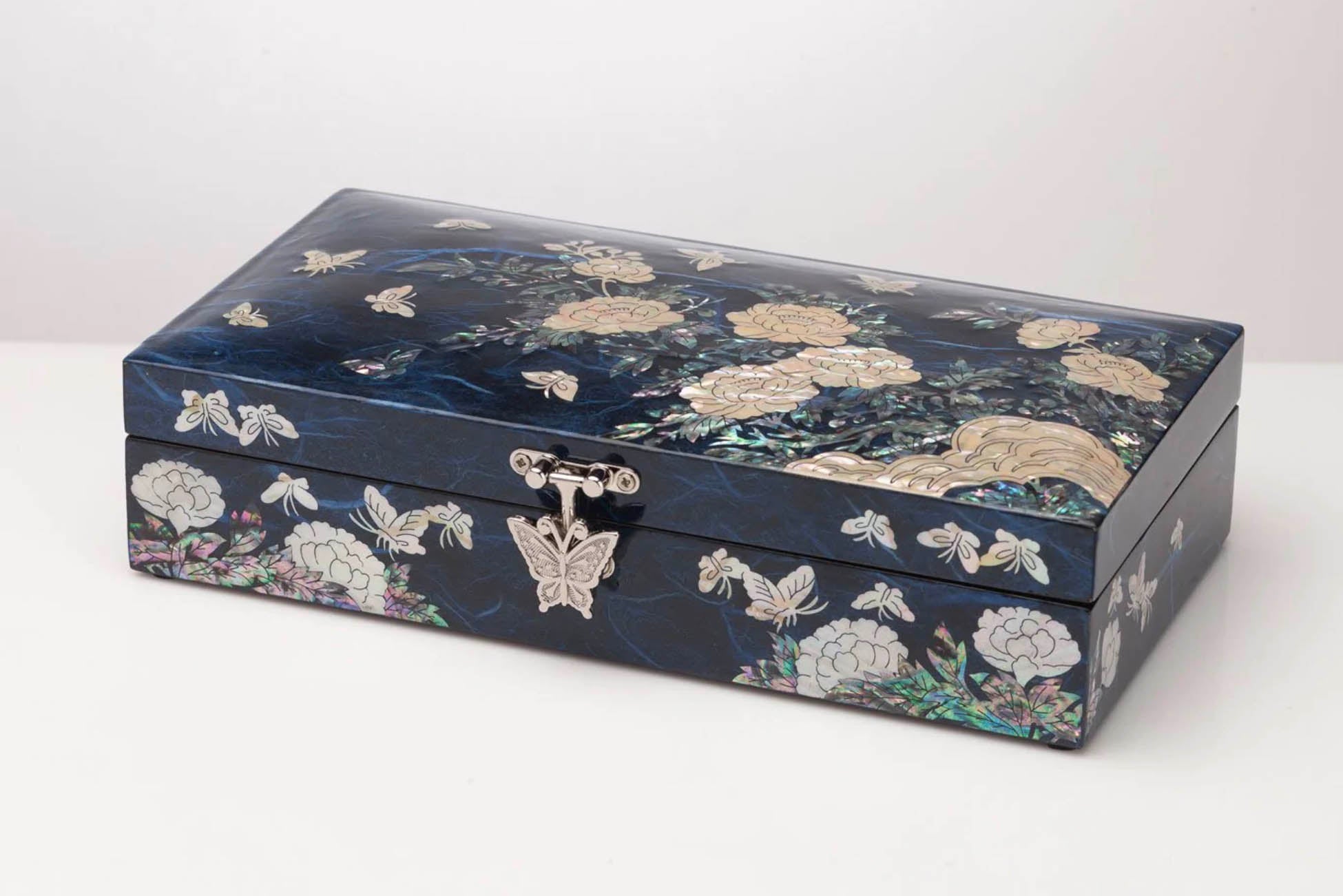
Conclusion: Timeless Treasures of the Joseon Soul
In the end, traditional Korean jewelry boxes stand as more than mere receptacles of glittering gems; they are living artifacts that encapsulate the soul of the Joseon Dynasty. Through their intricate craftsmanship, symbolism-laden ornamentation, and functional elegance, these boxes offer a window into a bygone era, narrating stories of societal norms, artistic prowess, and the timeless quest for beauty. As we continue to unravel their secrets, we are reminded of the enduring power of art to transcend time, connecting past and present, tradition and innovation, in a harmonious dance of cultural heritage.





